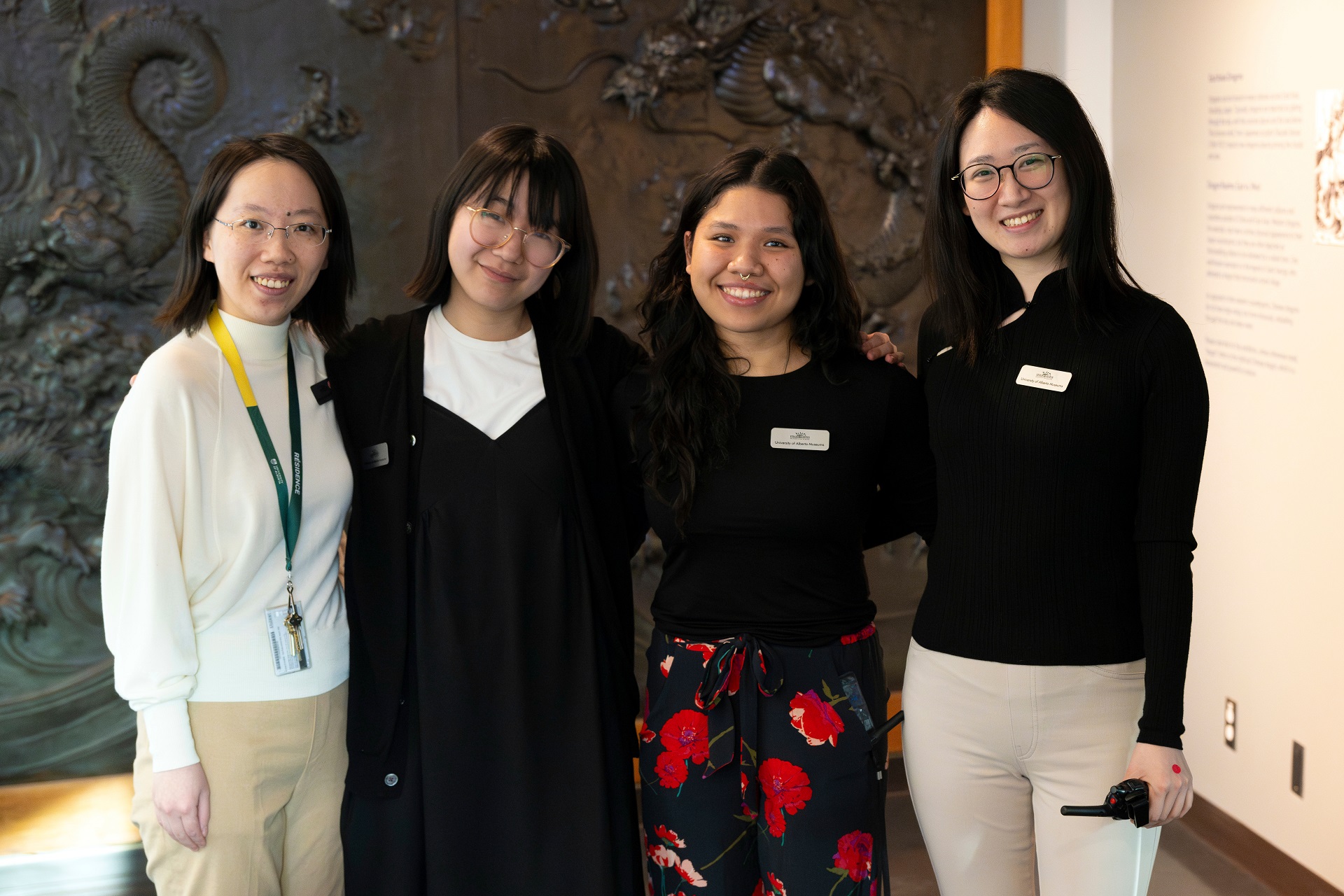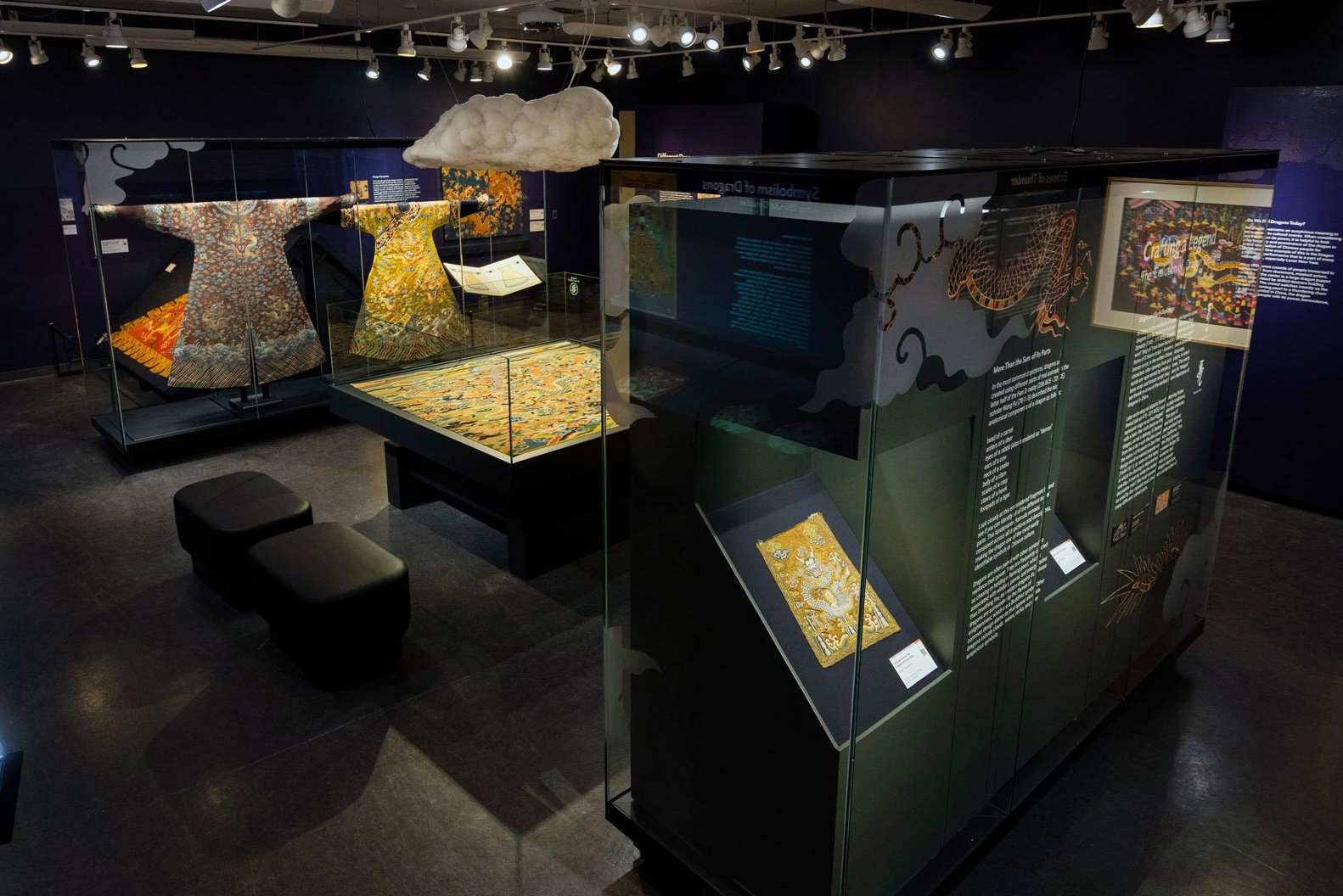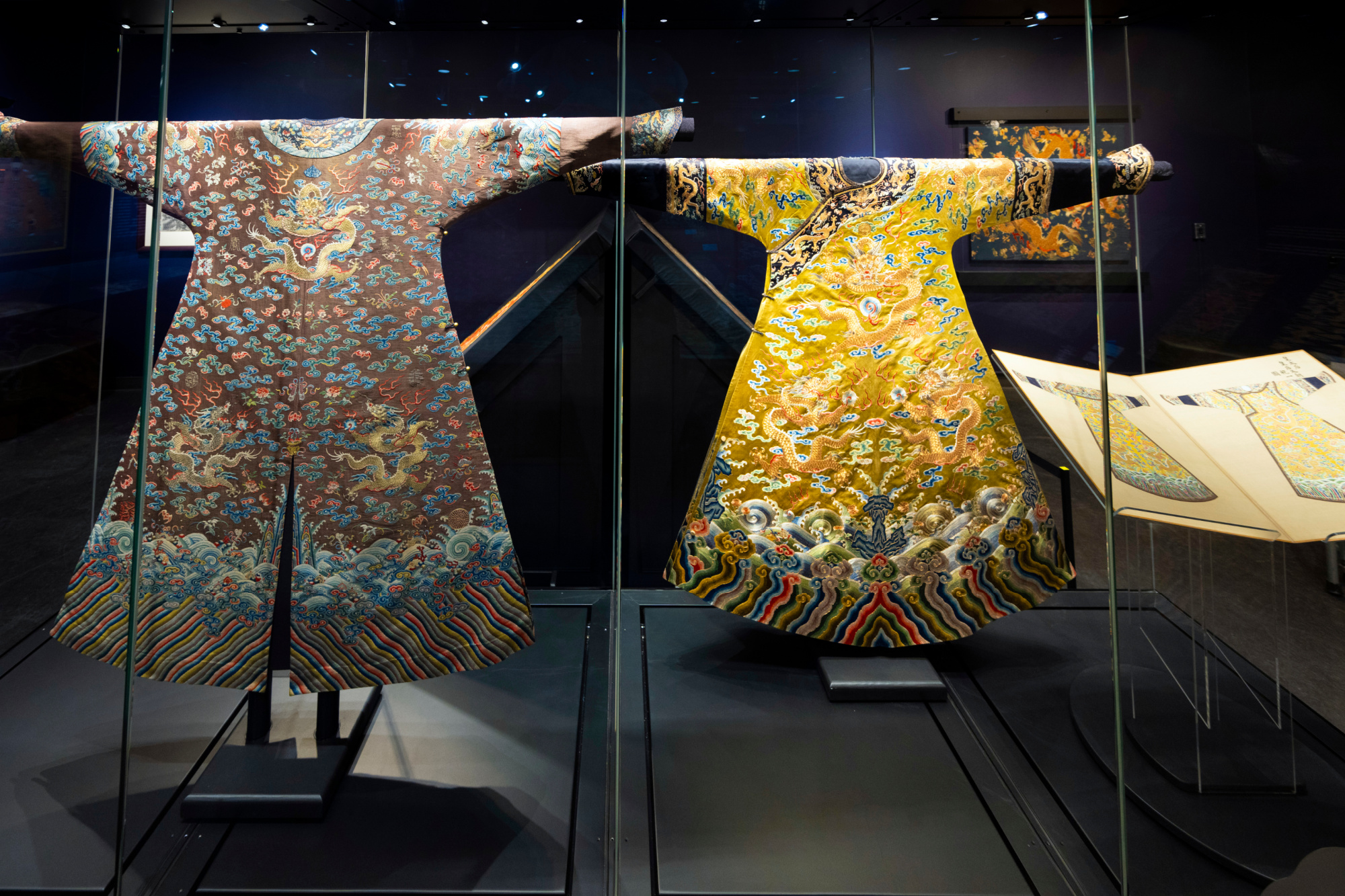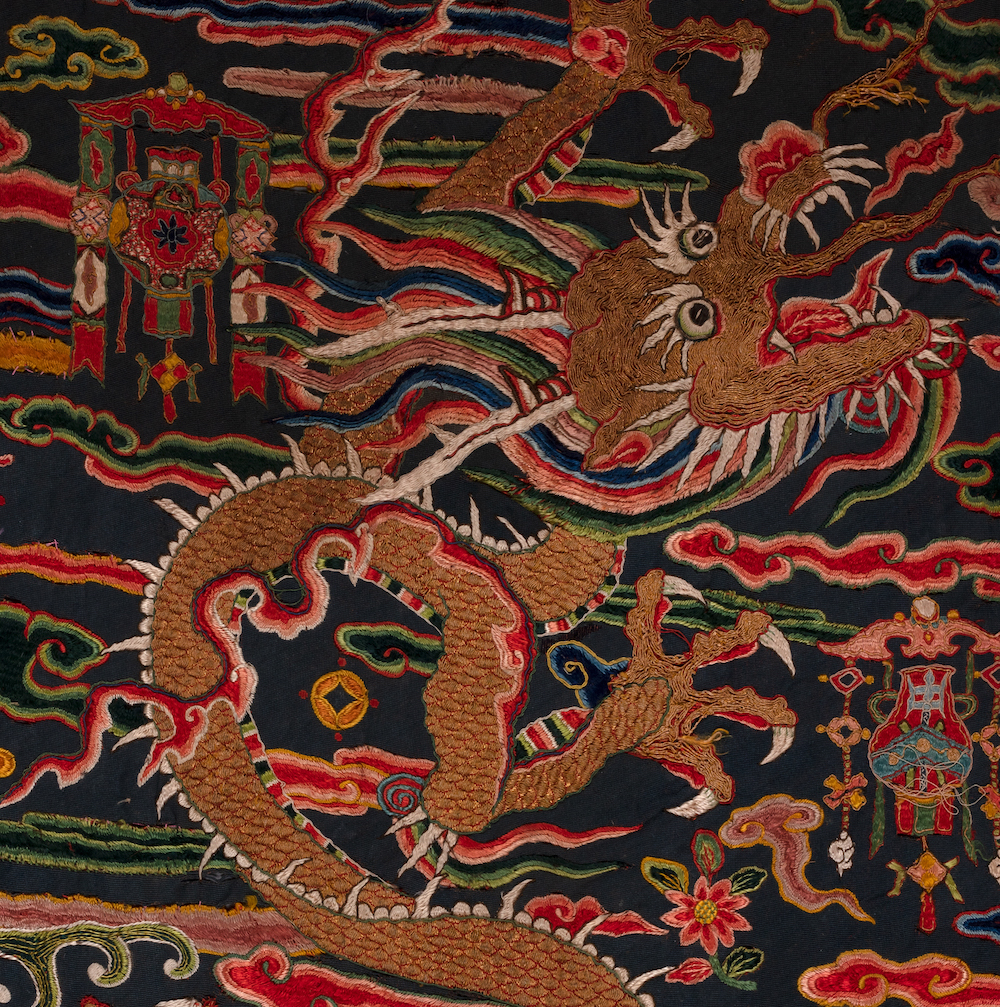A Conversation with Tom Hunter
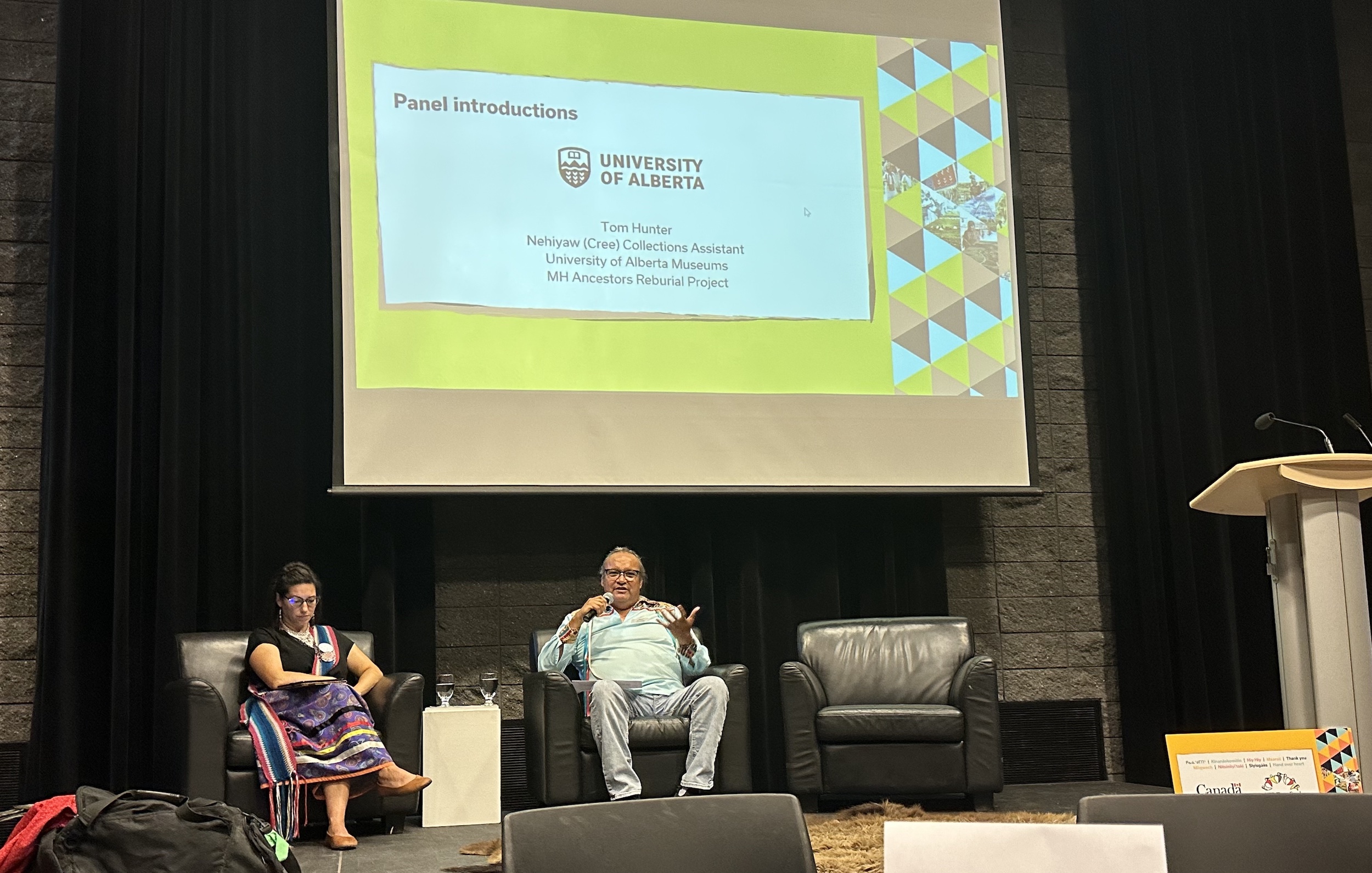
Tom Hunter, Collections Assistant with the University of Alberta Museums, speaking at a panel in Medicine Hat for the Ancestors Reburial Project.
Today I sat down to speak with Tom Hunter (TH), Collections Assistant with the University of Alberta Museums Art Collection.
Craig: Just to get started, can you tell me a little about yourself and how you got involved with museum work?
TH: It was just being in the right place at the right time. The Métis Nation of Alberta was doing a pilot program with the University of Alberta, and they were going to train Indigenous people on the technical side of libraries, archives, and museums. They called us LAMs. So I got in there, and I finished the program, and I did my practicum in the course with the University of Alberta Museums. I worked for this department for 13 years on contract, and for the last 15 years, I’ve been a full-time employee.
Craig: I know in a previous interview with Presenting Our Presence, you talked about the importance of connecting with objects in person. What about the hands-on and behind-the-scenes aspect of museum work is so important to you?
TH: For me, when I listen to artists talk about artwork, it doesn't make a lot of sense to me, and I don't have a lot of that talent to produce that kind of art. But when I see a really nice piece of art that arrives here in good condition, it gives me pride of place to know that I have a part in keeping it looking the way it is, and keeping it in the environment that it needs to be in, and knowing the dangers for it.
The former curator Jim Corrigan taught me an important lesson when I first started working here. I was really nervous handling some of the art, because some of these pieces are worth a lot. But we also had in our collection kid’s drawings from the Faculty of Education. So he said, “It doesn’t matter if it's this piece that's worth $2, or that piece that’s worth $200 000. They all deserve the same time and care. You have to be as careful with one as with the other.” It took a lot of pressure off me. You just treat everything the same.
Craig: For a role like yours that has such diverse responsibilities, how do you manage priorities, especially in an organization like this that is so spread across the campus?
TH: My job involves a lot of things that come at me, and things that have to be done immediately. But for the most part, my job is pretty much the same. I have to do storage checks, and I have to do cataloguing of objects. There are also things like loans that come along, and I prioritize based on the needs of the unit. You have to be flexible in this job. One time you’ll be answering questions for a blog, and the next time they’ll be asking you to carry up photography equipment because the elevator’s broken. You just have to work in the team environment.
Craig: You’ve talked before about the issue of respecting artifacts that are also people. What are some major ethical concerns in museum work that have to be addressed?
TH: When we talk about displaying human remains, a mummy is not a “mummy.” Inside of the wrappings is a person. I was talking with Indigenous children, and said to them, “That could be your mosom (grandfather). How would you like me to wheel him out and say, ‘Hey, everybody, look at this guy!’” I’ve also been working on the repatriation of human remains right now. I’ve worked on two or three of these cases already. So you know, putting these people back where they belong, or at least reintering them in the ground and getting them so that they’re not being used for research anymore. Also, the repatriation of cultural artifacts. There may be good provenance on some of these things, but that's just what people say. They may have bought these objects from somebody who was desperate. Some of the objects we have, people wouldn't have sold unless they were under some kind of duress.
Craig: When you’re in a museum and you look at an object, most people don't really think about those things. You think about history, but maybe not about the specific history of that object, and how it got there. You have to dig deeper.
TH: And you know, things have really changed. In the 20-some years I’ve been in the field, Indigenous people have started to be able to tell their own stories. They’re able to say, “No, you should not be showing that,” or, “You can't show that. These are sacred objects, and they're not meant to be out on display.”
Craig: I've heard you speak about the necessity of having the courage to always take the next steps forward. What steps would you like to see museums take in the future?
TH: Museums need to take the lead when talking about returning cultural property. They need to say, “We have this stuff, we’d like to give it back to you, this is how we’re going to help you do it, and we're gonna pay for it.” Not to say, “We have this stuff, do you want it back?” My foot is in both worlds. I heard a story about some items that got repatriated to a reserve in Saskatchewan, and then somebody broke into their museum and stole all of it. The person who told me that story was saying that because of things like this happening, “No, we shouldn’t give any of this stuff back.” And I said, “Well, maybe we should be helping them to find a better way. To find a better security system. To help them take extra precautions.” You just have to do your best. Museums have to take a more proactive stance on those kinds of issues.
Craig: As a key figure in the Print Study Centre (PSC), why is preserving art from a multitude of different cultures and eras so important?
TH: That collection is an awesome teaching resource because it spans different continents, different periods, and different genres. It contains everything from MFA students to old masters. The unique thing about the PSC is that students and visitors can look at the actual artwork, and look at it without it being under glass. It's not like when they’re doing art history courses, and looking at slides, or pictures in books, or a screen. You’re seeing the real thing, you're seeing exactly how big it is, and it's right there. You need to have the breadth of the collection because printmaking is such a diverse field. There are so many different techniques, and multi-layered techniques, and different imagery that you need to have good examples from all over the world. We’re lucky to have that kind of selection.
Craig: What would you say is the most rewarding part of your job?
TH: Just working with people, because with my job here at the university, I get to deal with everybody. I’ve known four presidents now, and then people right down to building services. So I get to deal with a whole gamut of people. I get to meet new artists, and students, and lots of people that come and work here. I never wanted to be a curator, because in Collections, I get to touch everything, and handle stuff. I like what I do. I’m sure I wouldn't have stayed here as long as I have if I didn’t like it.
Craig: Is there a project going on that you’re excited about?
TH: Working on the Medicine Hat Ancestors Reburial Project. And we’re going to look at the O.C. Edwards collection, as a possible repatriation. I also really like the fact that we’ve been out looking to acquire more Indigenous art, and I’ve been able to become more involved with that.
Craig: What is the role of students within the UAM?
TH: If it wasn’t for students, we wouldn’t be here. For me, it's getting people excited about museum work. It’s to show the students that they have an opportunity to work with some fantastic objects and some fantastic people. And at the U of A, our museum is not all just art collections and historical artifacts. It includes the natural sciences, too.
Craig: How can I, as a student Collections Assistant, make the most of my experience? Do you have any advice for me?
TH: Don’t say, “I don’t think I can do that.” If you’re having a hard time, ask someone. Ask as many questions to as many people as you can. And if there’s something that you want to do here that you see us doing, ask about it! Because we’re pretty flexible here with these kinds of jobs.

Reflection
An interesting topic I touched on with Tom was the idea that museum objects not only help us understand broad trends of the past, but that they each have their own individual history to discover. For example, while visiting the upcoming Dentistry Museum Collection exhibit space in the new Sperber Library, you may see a handheld tool, and learn about its uses, its era, and why it is significant. In this way, the object is a physical embodiment of knowledge, and stands in place for all objects just like it. But that handheld tool also has a personal history of its own. Some specific person made it, another bought it, and more after that used it. There’s a unique trail you can follow through time, eventually leading to how it ended up in the museum's possession.
This is especially important to recognize when considering Indigenous artifacts. Due to the generational discrimination and oppression of Indigenous peoples in Canada, a complicated history exists here that these artifacts are inherently a part of. As Tom discussed, many of these objects may have been given under duress, or sold in times of desperate need, or even taken without any consent at all. Due to a lack of proper documentation for many older objects, it is nearly impossible to know what really happened.
It is also crucial to recognize that even though these artifacts should undoubtedly be repatriated to their rightful communities, this doesn’t mean that the history and culture of Indigenous peoples should be absent from museum collections. It simply means that there are better ways to enhance their presence in these spaces. I realized this both while creating mounts for Inuit stone sculptures and during an inventory of the over 400 pieces of public art across our campus. Some of the most striking works I saw were creations from Indigenous artists, from Norval Morriseau, to Alex Janvier, and countless other painters, printmakers, and sculptors. By acquiring objects in this way, museums not only support these artists and their communities, but ensure that their culture is represented on their own terms.
